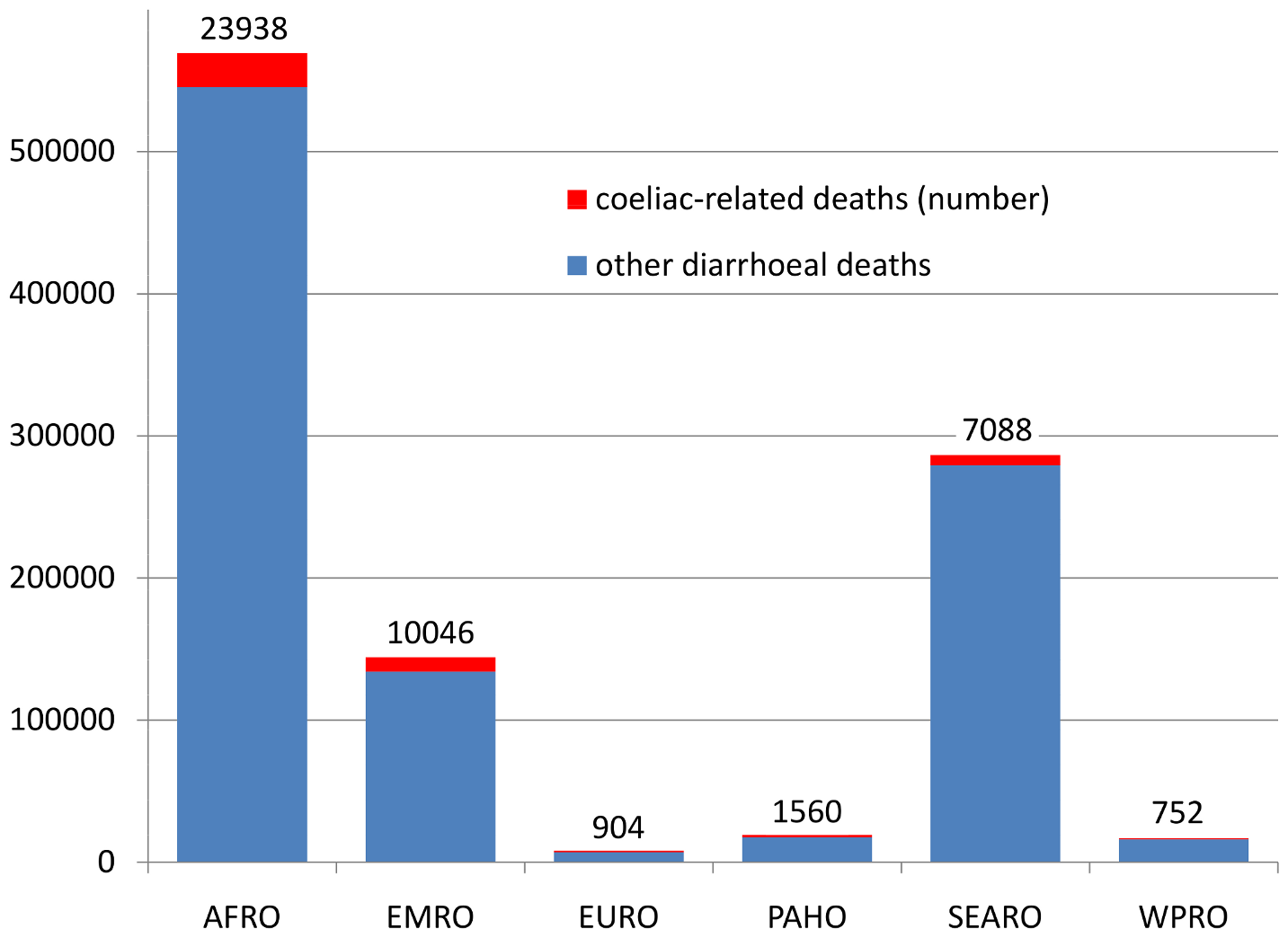Historically, many diseases were first recognised in a particular place and later found on a wider basis. For coeliac disease and gluten intolerance, it's only fairly recently that the problem has been recognised globally, outside western Europe and north America. Data are still very scarce on a global scale, but it's now known that all the world's populations are susceptible, with somewhere in the region of 1 in 100 people being affected.
It's also now well-known that a strict gluten-free diet is the only way for people with coeliac disease to stay healthy. Easier said than done though - specially with pre-prepared foods containing a multitude of minor ingredients. But before the link to gluten was established (in the mid-1900s), many children with coeliac disease simply died, because nobody knew what to do for them.
Unfortunately in today's world there is still massive inequality in health services - in terms of available diagnostics and treatments for all diseases. Coeliac disease is no exception to this - and so if children in poor environments have the disease (which often shows up as long-term diarrhoea, malnutrition and general weakness - rather non-specific and common symptoms) it may well be that nobody even suspects coeliac disease - making death very likely if they continue to eat bread and other gluten-bearing foods. Malnourished children may even get special nutritional supplements that contain wheat - good for the non-coeliacs, but potentially disastrous for those reacting to gluten.
Putting all this knowledge together, researchers at Umeå University in Sweden and the University of the Witwatersrand in South Africa have made the first global estimates of the likely numbers of children affected by the disease and those likely to die as a result of non-diagnosis. In all, just over 2 million children worldwide are currently affected, but most importantly the figures suggest that around 40,000 per year probably die as a result of undiagnosed coeliac disease. Most of these deaths happen in Africa and Asia, because children in other regions have a much better chance of being diagnosed correctly. Although 40,000 is only about 4% of all childhood deaths related to diarrhoea, these deaths could be prevented if the affected children ate rice, bean and maize-based foods, excluding wheat and other gluten.

So this is a big challenge for current campaigns seeking to reduce child mortality - not least under Millennium Development Goal 4 (MDG4) which aims for substantial improvements in child survival by 2015. Even if other childhood diarrhoeal deaths were substantially reduced, current guidelines (rehydration fluids, food supplements, medicines) would not help the small proportion of children actually suffering from coeliac disease, with potentially fatal consequences.
The whole world needs to be much more aware of the problem highlighted in these new figures - and we urgently need to raise awareness of the possibility that chronically sick children in Africa and Asia might be gluten-sensitive, if their lives are to be saved.